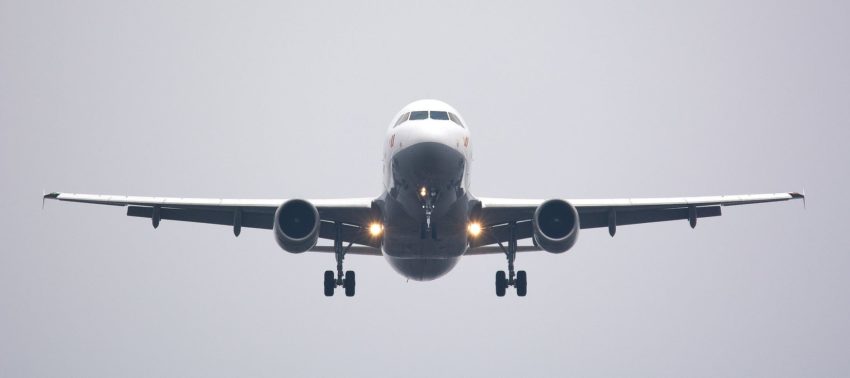If you don’t have the right qualifications to start our BSc (Hons) Aircraft Maintenance Engineering degree, you could start your studies with a foundation year. The extra year will give you the best possible preparation for success on the degree programme.
This Aircraft Maintenance Engineering course is recognised by aviation law, as detailed by the European Aviation Safety Agency (EASA) and the General Civil Aviation Authority (GCAA), and gives you access to real aircraft experience.
We are the only university in the UK that has integrated the industry-standard aircraft maintenance qualification ‚EASA Part 66′ with an Honours degree, delivered on a single campus. On completion of the required EASA training, you’ll be able to apply for a full EASA Part 66 and GCAA Aircraft Maintenance Engineer Licence in just two years, which usually requires five years’ professional experience. Additional costs are likely to apply to the required professional experience.*
The University has CAA and CAR 147 approved Maintenance Training Organisation status. This means that our Aerospace Centre on campus is treated as a real aircraft environment, and emulates the same commercial aviation quality control you would expect in the industry worldwide. This approach not only satisfies EASA and GCAA regulations, but will also help you make the transition from the classroom into employment.
You’ll also have the option to arrange and undertake practical training all over the world with any University-approved Part 145 Maintenance, Repair and Overhaul (MRO) organisation. This course is also available at our Dubai campus.
What you will study
The BSc Aircraft Maintenance Engineering degree has the European Aviation Safety Agency (EASA) Part 66 Aircraft maintenance licence fully embedded within the university modules. This allows you the opportunity to obtain this industry recognised qualification whilst you study for your degree. The University of South Wales is the only EASA part 147 UK University currently approved to deliver and award this qualification as part of its BSc Aircraft Maintenance Engineering degree.
Foundation Year: Aircraft Maintenance Engineering Degree
- Foundation Calculus
- Foundations of Mathematics
- Aircraft Anatomy
- Experimental Methods
- Foundation Engineering Mechanics
- Engineering Practice Development
- Electrical Science
Year One: Aircraft Maintenance Engineering degree
In year one, you’ll study the principles of engineering and the EASA B1.1 Basic Knowledge modular structure in greater depth. You’ll study the basic laws and theories of electrical and electronic fundamentals, aircraft materials, aerodynamics, physics, analytical methods, and professional practice.
- Analytical Methods for Engineers
- Aerospace Mechanics
- Electronic Fundamentals for Maintenance Engineers
- Aerospace Materials and Hardware
- Electrical Fundamentals for Maintenance Engineers
- Professional Engineering Techniques
Year Two: Aircraft Maintenance Engineering degree
In year two, you’ll enhance your knowledge of propellers, maintenance practice, instrumentation systems and human factors, and hone practical and workshop skills. You’ll also study engineering management and issues surrounding the aircraft maintenance industry.
- Maintenance Practice for B1 Licence
- Aircraft Instrumentation Systems
- Managing Human Factors
- Fundamentals of Business Engineering and Management
- Maintenance and Repair of Aircraft Propeller Systems
Year Three: Aircraft Maintenance Engineering degree
In year three, you’ll study aircraft structures and systems, gas turbine engines, aviation legislation, and complete a dissertation project.
- Aero-Structures, Aerodynamics and Systems
- Individual Project
- Aerospace Turbine Propulsion Systems
- Aviation Legislation
- Supervised Work Experience (SWE)
Teaching
The Aircraft Maintenance Engineering course is taught through a combination of lectures, tutorials, workshops and seminars, in addition to independently preparing for lectures. The course is an intensive study package, you will be required to attend classes for up to 27 hours per week during term time. The first year is mostly based on theoretical aspects of aircraft engineering but there are some elements of practical activities in the avionic modules. The second and third year studies are more mixed with practical activities such as working on the aircraft, carrying out mechanical repairs in the workshop and using composite materials.
Assessment
You will be assessed through assignments, coursework, ongoing class tests and exams. EASA Part-66 examinations lead to a professional qualification and are governed by European Aviation Safety Agency (EASA) rules and regulations.
* EASA Part 66 Licence: Complete all three years of the degree, attain 90% attendance of the EASA elements, pass EASA modules at 75%, complete 360 hours of approved practical training (additional costs may apply and are at the discretion of your Part 145 host organisation) and you’ll be able to apply for an EASA Part 66 Licence after two years’ experience. Otherwise, you will need five years’ experience.
There may be an additional cost for the practical training depending on the maintenance organisation. Once the criteria above have been successfully met, you will be eligible for a three-year reduction in your professional experience requirement for an EASA Part-66 Licence.
If you do not meet all of the above criteria for the accelerated route, you will transfer to the non-accelerated route and will need five years’ professional experience in order to apply for an EASA Part-66 Licence.
Zobacz więcej na stronie uniwersytetu >>
Wiza studencka do Wielkiej Brytanii
Aby studiować w Wielkiej Brytanii potrzebujesz wizy studenckiej. Aby złożyć wniosek o taką wizę studencką musisz zdjać certyfikat językowy na poziomie B2.
Uważaj! Do celów wizowych musisz wybrać wyłącznie egzamin w wesji Secure English Language Test (SELT) UKVI .
Co to jest test SELT UK VI registration? Przeczytaj więcej o testach SELT UKVI >>




















